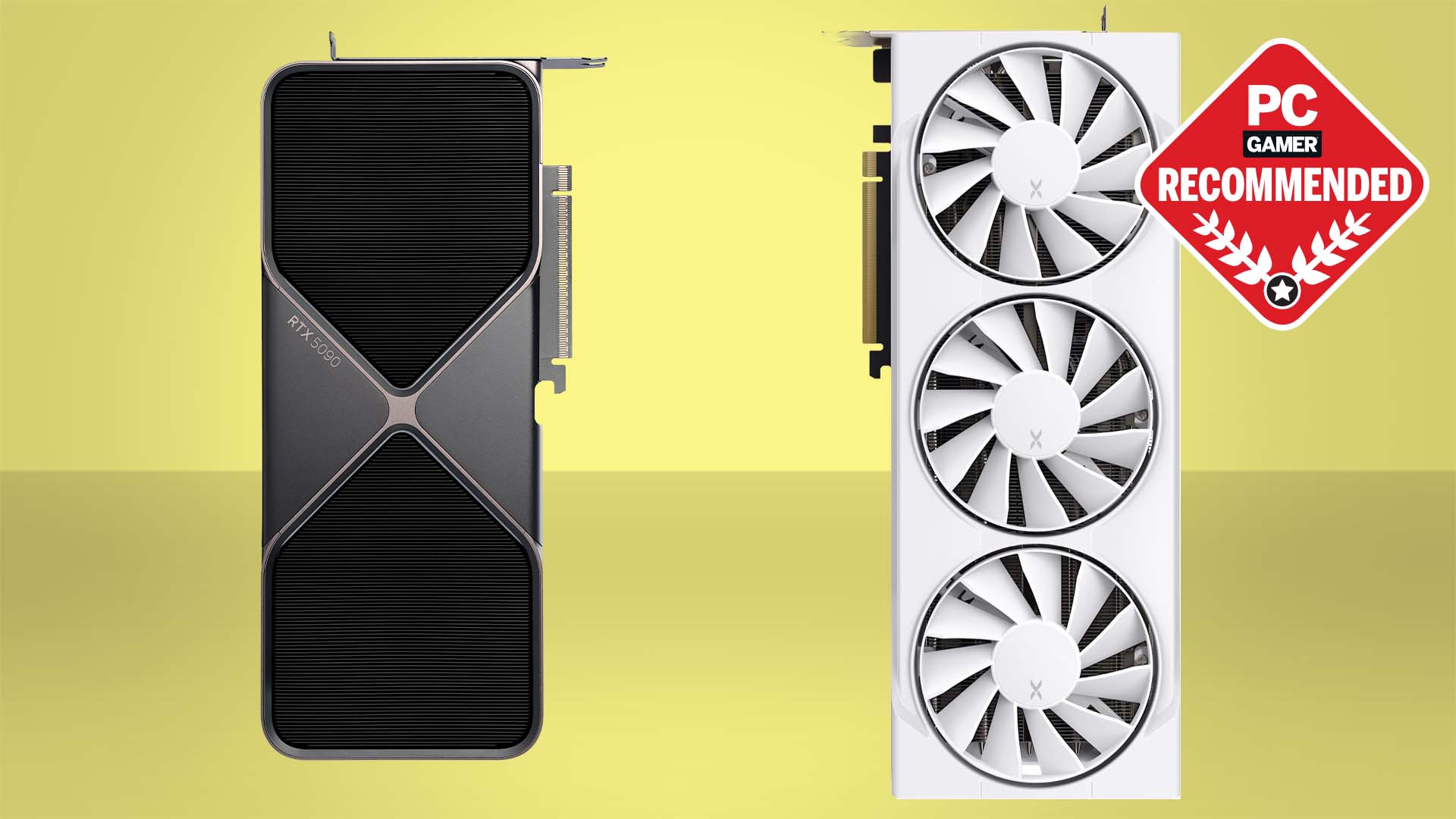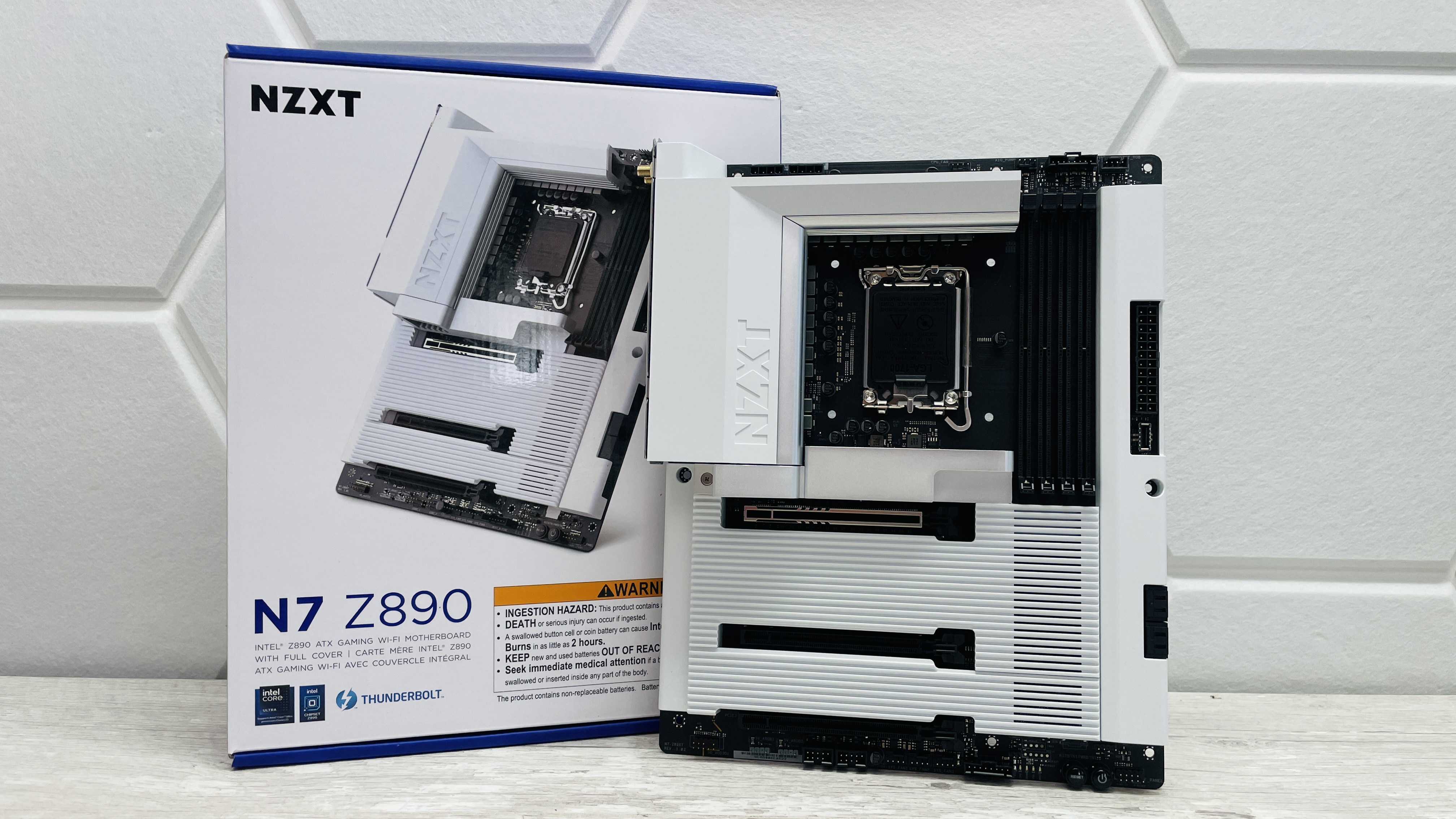Intel aims to keep AMD at bay with its 10nm Sunny Cove CPU architecture
Intel made a series of announcements during its Architecture Day event.
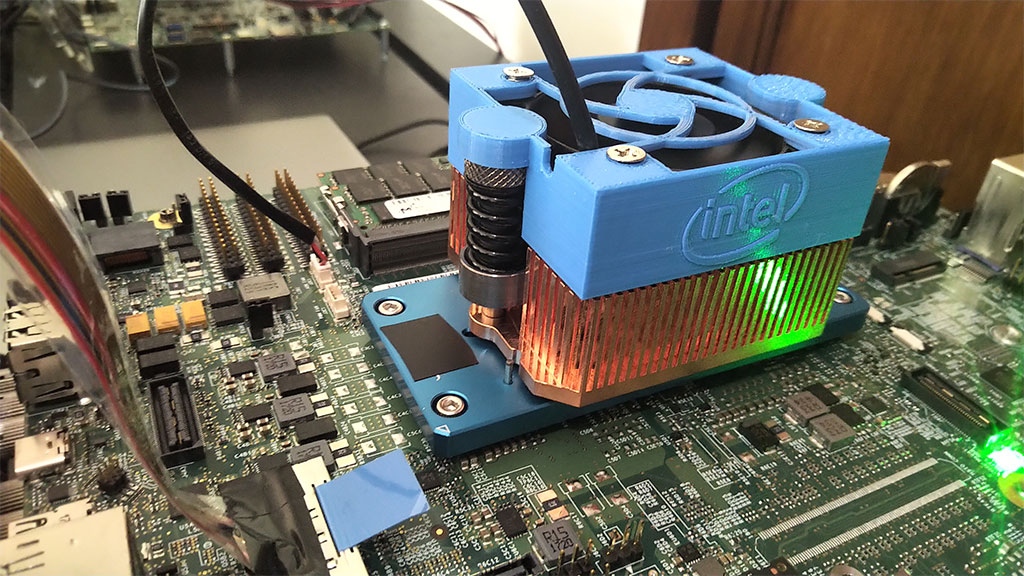
Intel, maker of some of the best CPUs for gaming, made a series of announcements today as part of its "Architecture Day," including a new architecture called Sunny Cove, a next-generation integrated graphics solution, and perhaps most interesting, a 3D chip design breakthrough that could dictate how future processors are made.
Starting with Sunny Cove, the new architecture is bound for both Xeon server and Core consumer processors. Intel said it designed Sunny Cover to execute more operations in parallel, with new algorithms to reduce latency. "Sunny Cove enables reduced latency and high throughput, as well as offers much greater parallelism that is expected to improve experiences from gaming to media to data-centric applications," Intel said.
We've never heard Intel reference Sunny Cove before, so it was a bit of surprise, especially with several other architectures already on the roadmap. Our understanding is that the name Sunny Cove is a new way of highlighting the base architecture, while there will still be product codenames (eg, Ice Lake).
Sunny Cove is being built on a 10-nanometer manufacturing process. Intel had run into trouble with 10nm in the form of Cannon Lake, which is still on track to ship in volume at the end of next year. As Intel recently explained, however, its troubles with Cannon Lake "goes back to the early definitions of 10 nanometers in 2014" and the available lithography techniques back then.
Dr. Murthy Renduchintala, chief engineering officer at Intel and head of the company's technology, systems architecture, and client group, had recently pointed out that Intel has separate teams working on 10nm and 7nm chip designs. His message seemed to be that Intel's early troubles with 10nm don't apply to 7nm. Now with the introduction of Sunny Cove, Intel seems to be indicating it has a firm grasp on 10nm design and (presumably) manufacturing as well.
According to various sources, including HotHardware and AnandTech, Sunny Cove will also include dedicated registers and new instruction sets to boost artificial intelligence, compression, processing, and cryptography workloads. On top of it all, Sunny Cove is designed to offer better branch prediction accuracy and larger cache allotments.
It will be interesting to see what impact this has on Cannon Lake. Sunny Cove is slated to arrive in the second half of next year, and one demo chip showed "ICL-U" (Ice Lake U-series) on the heatsink, but the codenames may be in a bit of a state of flux. If Sunny Cove delivers the kind of IPC (instructions per clock) and overall improvements Intel promises, we could see it cannibalizing Cannon Lake. We're getting ahead of ourselves, though.
Keep up to date with the most important stories and the best deals, as picked by the PC Gamer team.
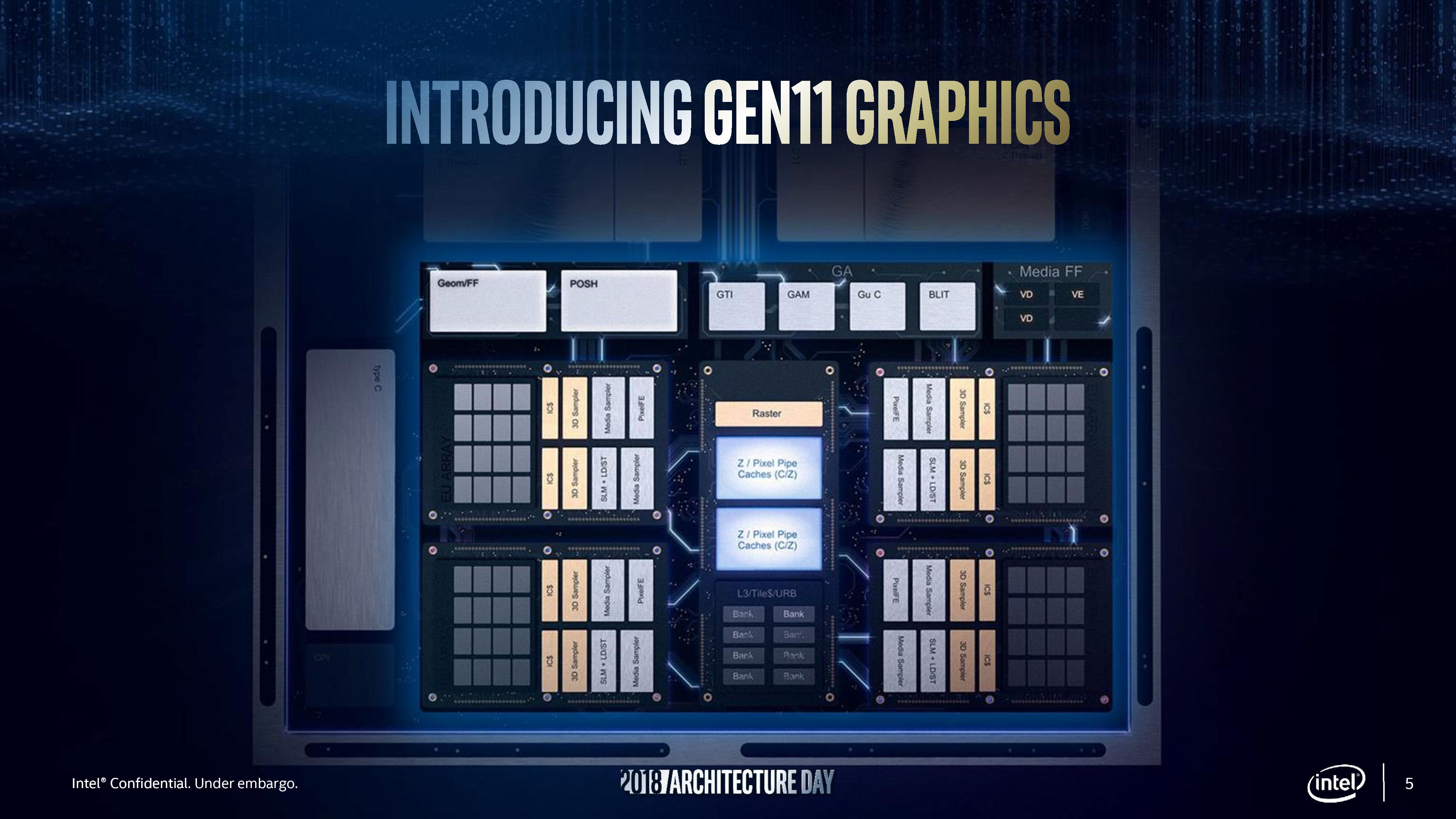
Pushing integrated graphics to 1 TFLOPS
To go along with a new CPU architecture, Intel also unveiled a new round of integrated graphics dubbed Gen11. It has 64 enhanced execution units (EUs), which is more than double the current generation Gen9 solution with 24 EUs.
"The new integrated graphics architecture is expected to double the computing performance-per-clock compared to Intel Gen9 graphics. With >1 TFLOPS performance capability, this architecture is designed to increase game playability," Intel said.
To put that in perspective, Intel is looking at more than doubling the performance of its GT2 graphics variant, so the HD Graphics 630 as an example currently offers a peak 460 GFLOPS. And there's still potential for larger performance improvements thanks to architectural changes.
We don't expect Gen11 to compete with high-end discrete graphics cards, but with the significant bump in EUs, it should offer much better performance than Intel's current solutions. Gen11 is slated to arrive in 10nm processors starting next year (which we assume to mean Sunny Cove / Ice Lake).
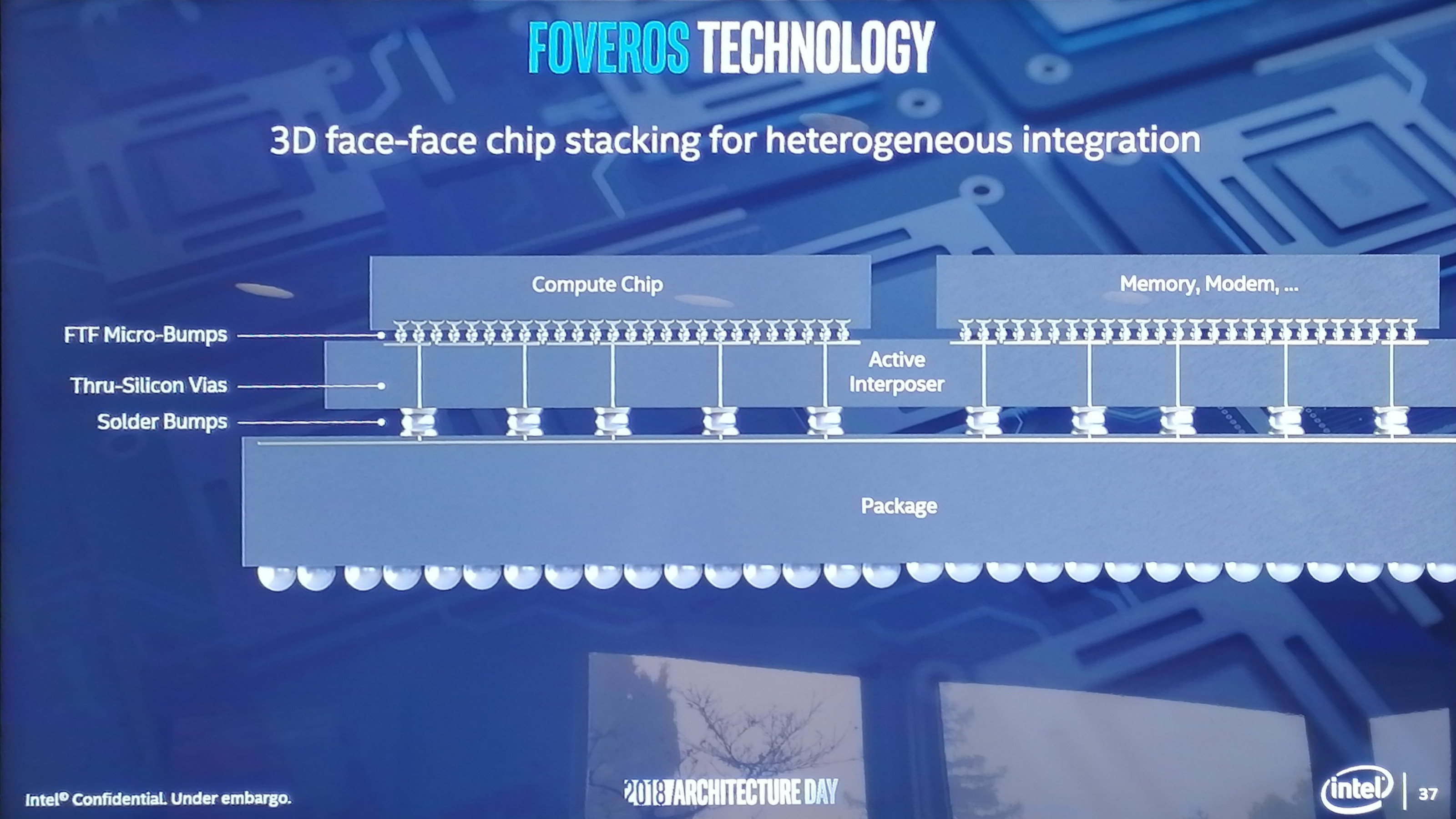
3D chip stacking
Arguably the most interesting thing Intel announced had nothing to do with Sunny Cove or new graphics that are in the pipeline, but a new 3D chip packaging technology called Foveros.
3D stacking is not inherently new—the technique is already used in memory products. However, what Intel unveiled is the industry's first 3D stacking of logic chips, which enables logic-on-logic integration for the first time.
"The technology provides tremendous flexibility as designers seek to 'mix and match' technology IP blocks with various memory and I/O elements in new device form factors. It will allow products to be broken up into smaller 'chiplets', where I/O, SRAM and power delivery circuits can be fabricated in a base die and high-performance logic chiplets are stacked on top," Intel explains.
Gizmodo likens it to building a multi-level house, as opposed to a single-level ranch home. It's a "radical re-architecture of systems-on-chips (SoCs)," according to Intel, and it's something the company has been working on for a very long time. Ramune Nagisetty, director of process and product integration at Intel and one of the leads on 3D stacking, told Gizmodo that Intel had been working on this "a lot longer than anything related to 10 nanometers."
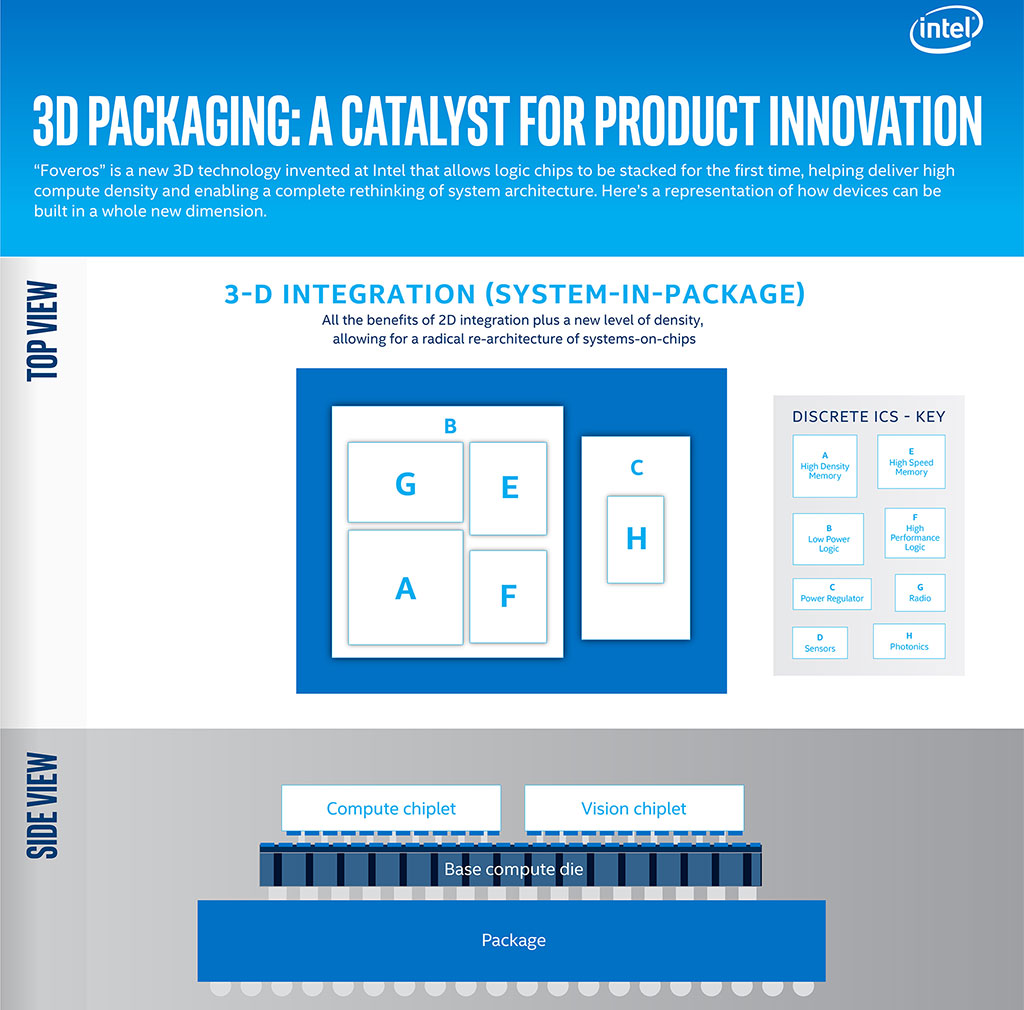
From a technical standpoint, one of the big advantages to 3D stacking is being able to swap out transistors and fit ones into a package that are most appropriate for the application.
"The transistor that's best for a desktop gaming CPU is not necessarily the best transistor for a GPU. Similarly, you need different transistors for running 5G and interconnectivity," Intel's graphics boss Raja Koduri said. "Before, we used to just take the best compromise of all of the silicon. Now, we can take processes that are best for the function and put them all together on a single package. And because we have very high bandwidth between these chips, they will function exactly as if they are a single chip."
This isn't some theoretical breakthrough that may never see the light of day. Just the opposite, Intel says it expects to launch a range of products using Foveros in the second half of 2019.
Paul has been playing PC games and raking his knuckles on computer hardware since the Commodore 64. He does not have any tattoos, but thinks it would be cool to get one that reads LOAD"*",8,1. In his off time, he rides motorcycles and wrestles alligators (only one of those is true).

